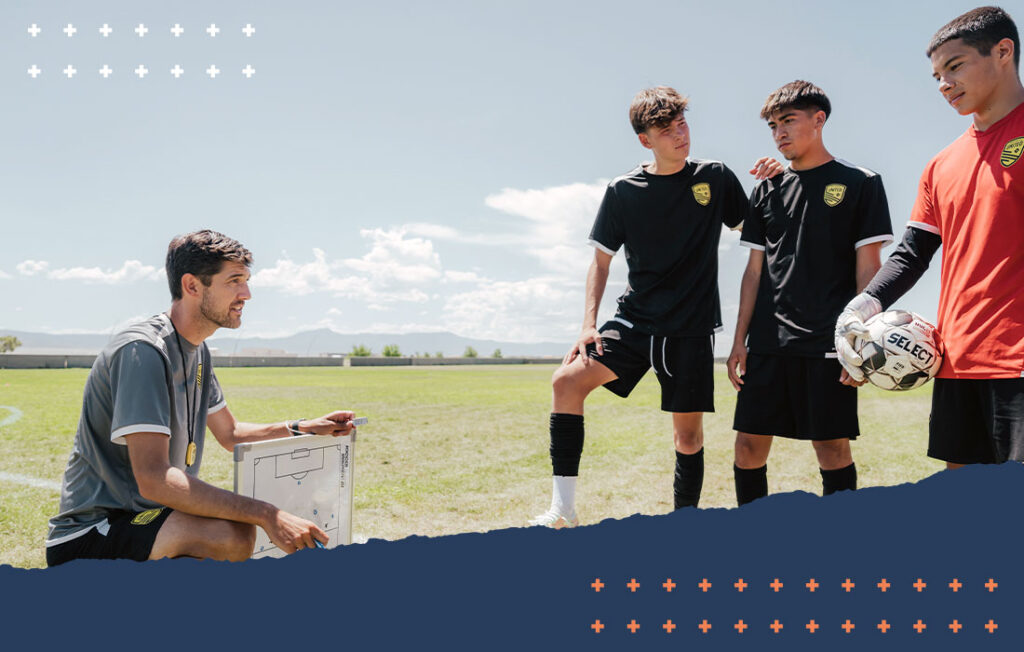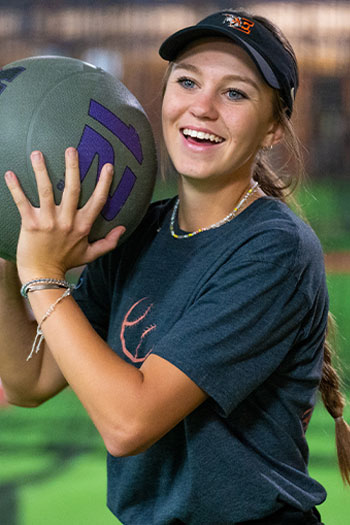
Join our email list!
Stay connected with the latest news, resources, and tools from the U.S. Center for SafeSport and enjoy our quarterly e-newsletter, The Gameplan.
Check your email inbox to confirm your U.S. Center for SafeSport Gameplan newsletter subscription.
Lead a culture change in sport

Keeping your programs abuse-free should be Job 1
It’s happening before our eyes. The culture of sport safety is changing for the better. It’s evident in more effective injury treatment and prevention protocols, as evidenced by an increased use of independent, third-party head-trauma experts across professional and amateur sport. We have better equipment and safer training methods. And there’s a sharper focus on athlete nutrition, rest, and recovery.
But those efforts ring hollow if we allow a lack of understanding about the signs of abuse and misconduct in sport to persist.
Acknowledge the Problem
Problems seen in society, including emotional and physical abuse, bullying, harassment, and hazing, can find their way into sport settings and have a crippling impact on participants and entire programs.
Abuse in sport is in the news and has become a top-of-mind issue for athletes, parents, coaches, and sport administrators that demands action.
A 2021 survey by sexual abuse awareness and prevention nonprofit Lauren’s Kids found that 1 in 4 current or former college athletes had experienced sexual abuse by an authority figure.1 Recent allegations of hazing and other physical and emotional misconduct have rocked high-profile collegiate programs including New Mexico State men’s basketball and Harvard women’s hockey.
Coaches, administrators, and other sport leaders are uniquely positioned to make a difference.
The U.S. Center for SafeSport has been on the leading edge of improving sport culture since its creation in 2017. An independent nonprofit, the Center provides tools, policies, trainings, and other resources to help sport leaders create supportive, positive, abuse-free sport.

“When you think about it, it’s the most important thing we can do as sport leaders: protecting our athletes”
GET TRAINED. END ABUSE IN SPORT.
The Center offers more than a dozen in-depth online courses for coaches, admins, volunteers and athletes to make sure all stakeholders have the knowledge and skills to help keep sport free of abuse.
These trainings were developed for U.S. Olympic and Paralympic sports bodies, and now have been adopted by more than 1,200 organizations across the country. With over 4 million courses delivered, they come with the quality and credibility coaches and admins can trust for their programs. Our easy-to-follow SafeSport® Trained Core course, for example, lays out principles and strategies to help create safer and more positive sport environments. It includes realistic scenarios to test a learner’s knowledge and applies course content to real-life settings.
The Center also offers other tools and resources relevant to coaches, athletic directors, and administrators. Our online Emotional & Physical Abuse & Misconduct Toolkit provides practical information on how to recognize different forms of abuse and misconduct, what they can look like in a sport setting, and what to do if it occurs.
GET STARTED
It’s incumbent on our sport leaders to set the tone for change. Be part of the solution—place athlete safety in its rightful place atop your program’s priorities.
“It takes a sea of people to create systemic change,” says Colón. “The size of our impact depends on you.”
References
- Lauren’s Kids, “College Athletes Report High Incidence of Sexual Abuse by Campus Authority Figure, Survey Finds,” https://laurenskids.org/college-athletes-report-high-incidence-of-sexual-abuse-by-campus-authority-figures-survey-finds/, accessed March 14, 2023.
